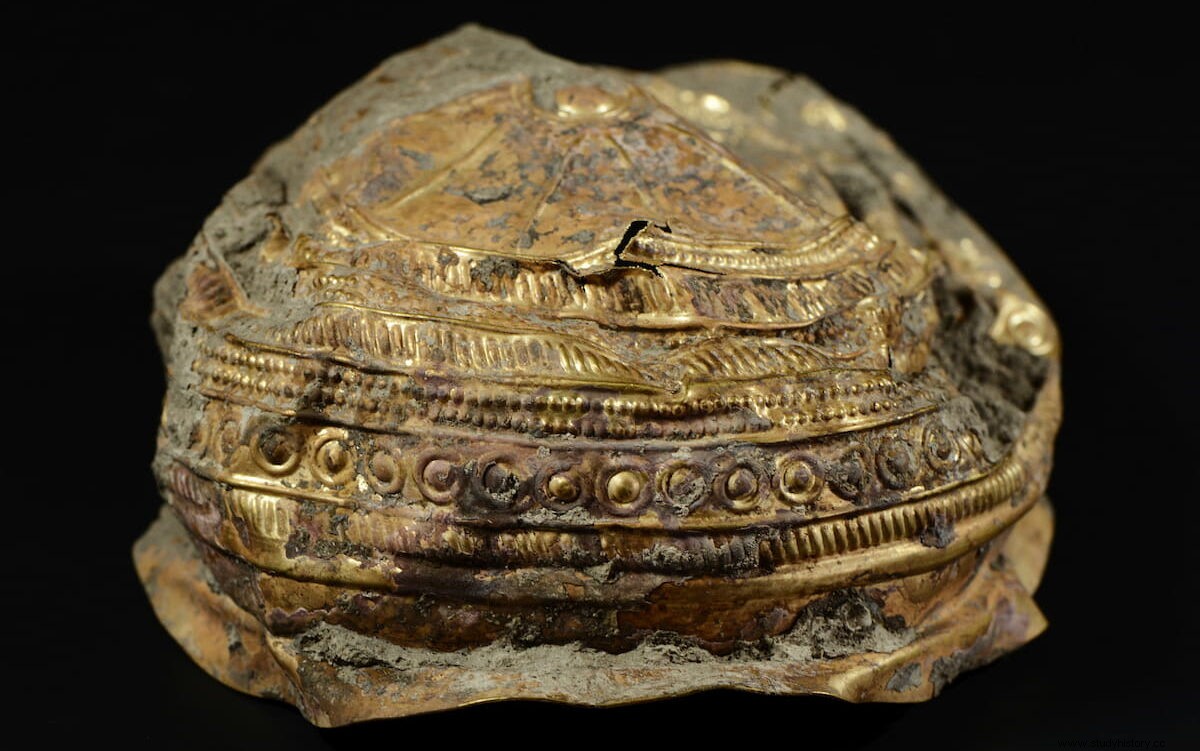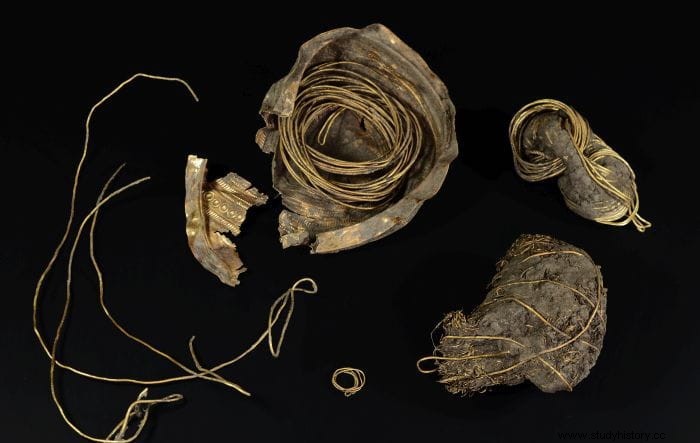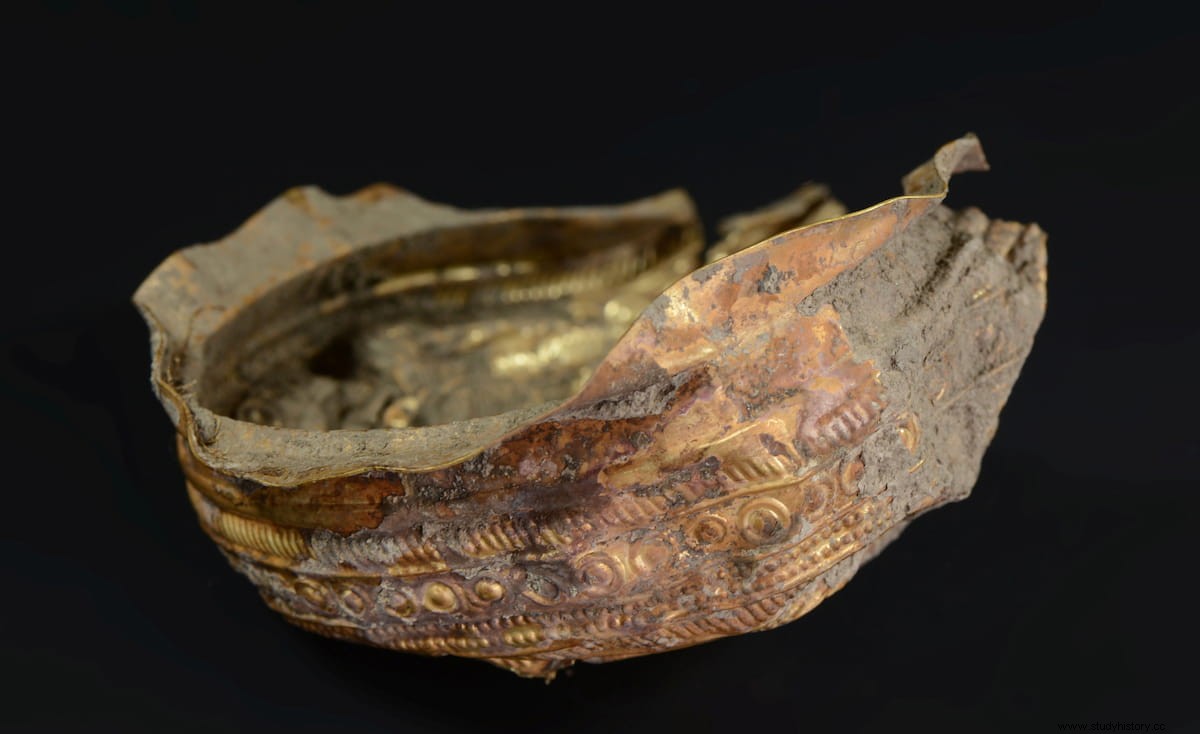Archaeologists working at the prehistoric site of Ebreichsdorf, in Austria, found hundreds of gold objects, among which a kind of bowl decorated with solar motifs stands out.
This is the first such find in Austria, adding to more than 30 similar bowls found elsewhere in Europe, such as Spain, France and Switzerland. Here we have already dedicated an article to a similar object discovered in Galicia, the so-called Casco de Leiro.

The bowl appeared at a shallow depth, near the wall of one of the settlement's prehistoric dwellings. It is decorated with solar motifs and measures 5 centimeters high by 20 centimeters in diameter.
It is made of a thin sheet consisting of 90 percent gold, 5 percent silver and 5 percent copper. The researchers are trying to determine where the materials with which it was melted came from.
Inside the bowl were two gold bracelets, made of coiled wire, and two small lumps that turned out to be organic material, perhaps cloth or leather. They were sewn with gold thread, which was then used to wind them. Archaeologists believe that the set may have a votive character, used during religious ceremonies of sun worship.

They are not the only findings of the site. The southern limit was demarcated by a water course, which during the existence of the settlement could have been a swamp. Some 500 bronze objects, such as needles, daggers and knives, appeared in this course. None of them were damaged, which means it wasn't a dump they were thrown there intentionally.
In the place there were also hundreds of kilograms of ceramic pieces and animal bones. All this was discovered in a layer about 2.5 meters thick, which indicates, according to the archaeologists, that it was a swamp, because if it had been a river, all the objects would have been at the bottom .
The bronze objects were thrown into the water during religious rituals, although the role of the golden bowl and bracelets is unknown.

The findings, dating from around 1300-1000 BC, correspond to the so-called Campos de Urnas culture. , so called because they used ceramic vessels to bury the ashes of their dead. This culture spread throughout much of Europe at the end of the Bronze Age.
According to the researchers, the inhabitants of the studied settlement led a sedentary lifestyle, engaged in agriculture and raising sheep. What is interesting is not only the valuable and numerous finds in the form of bronze and gold objects, but the fact that the settlement of Ebreichsdorf is so large . In total, the deposit could have a surface area of around 10 hectares.
Archaeologists found that the walls of many of the buildings were made of posts, probably filling the space between them with mud and clay. One of these structures is especially large, measuring 10 by 8 meters on a side, forming a rectangle. These structures were probably temples, meeting places or the house of the leader of the settlement .
